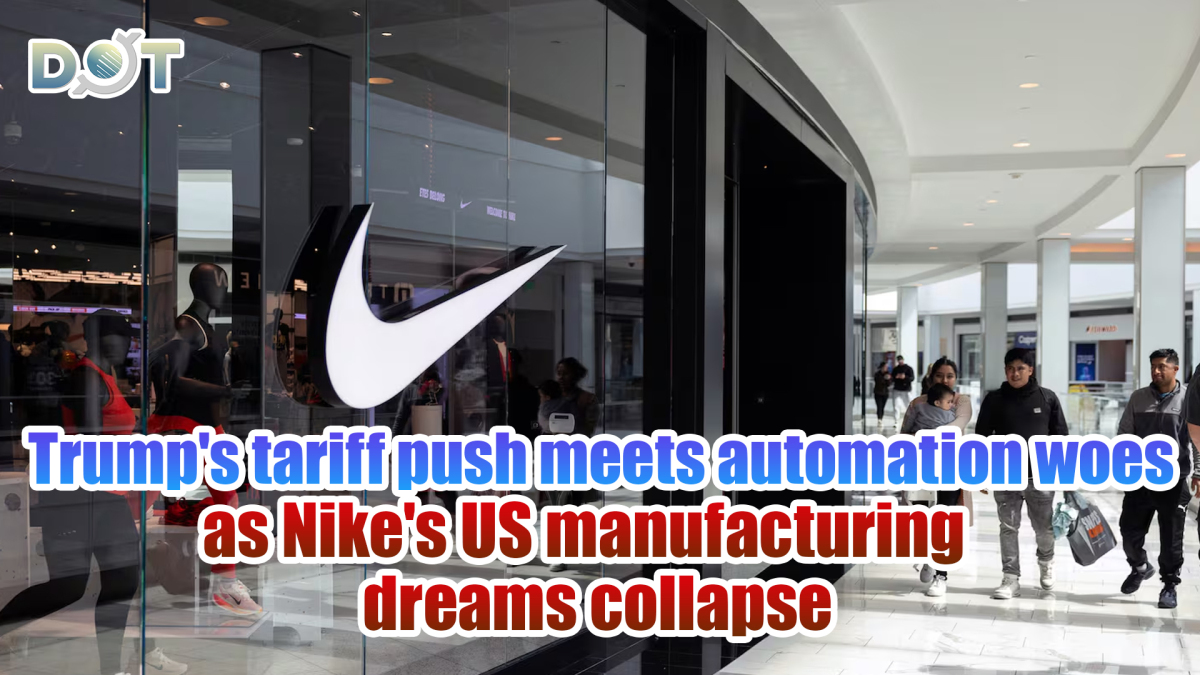
President Donald Trump's push to revive U.S. manufacturing through tariffs faces stark realities, as industry giants like Nike struggle to reconcile automation challenges with soaring labor costs. A decade after Nike's failed attempt to automate shoe production—a venture dubbed a "cautionary tale" by The Wall Street Journal—experts warn that reshoring factories remains economically unviable, with tariffs likely to trigger price hikes for American consumers.
Nike's Automation Debacle: US$700 Million Lesson
In 2015, Nike partnered with electronics manufacturer Flex (known for producing Apple's Texas-made Macs) to build a high-tech footwear factory in Mexico. The US$700 million project aimed to revolutionize sneaker production using repurposed automation machinery. However, machines struggled with tasks requiring human precision, such as stitching flexible shoe uppers composed of up to 40 temperature-sensitive materials. "If the layering isn't perfect, the shoe warps and fails inspection," said the project supervisor. Nike's frequent design changes further stymied automation, with Flex engineers spending eight months perfecting logo placement only for the template to become obsolete. By 2019, the Mexico factory doubled its workforce to 5,000, labor costs surpassing those in Vietnam, before Nike scrapped the project entirely.
Tariff Turmoil and Stock Market Whiplash
Trump's April 1 announcement of "reciprocal tariffs" targeting Asian supply chains sent Nike's stock plunging 14% that day. Shares rebounded 8% on May 12 after U.S.-China tariff reductions, reflecting market sensitivity to trade policy shifts. Analysts warn that costs will cascade across Nike's supply chain, hitting contractors, wholesalers, and consumers.
Why Automation Fails in Footwear
Footwear remains a labor-intensive industry, with only 1% of U.S.-sold shoes made domestically. Automation hurdles include:
Material Complexity: Machines lack adaptability to handle soft, elastic fabrics.
Design Fluidity: Frequent style changes disrupt standardized production.
Costs: U.S. factory construction and automation investments exceed tariff savings.
Nike isn't alone. Under Armour abandoned a 2015 U.S. robotics initiative in 2019, while Adidas shuttered its "Speedfactory" automated plants in Germany and the U.S. in 2020.
Policy Uncertainty Deters Relocation
Economists argue that even with tariffs, reshoring makes little financial sense. Building a U.S. factory would cost Nike more than paying the 20-45% tariffs Trump threatens. "Policy flip-flops make long-term supply chain bets too risky," said trade analyst. The Footwear Distributors and Retailers of America (FDRA), representing Nike, warned the White House that tariffs pose an "existential threat," as price hikes would crush demand without reviving jobs.
Nike's Erosion of Dominance
Once commanding 16% of the global sportswear market—double Adidas' share—Nike faces mounting pressure. Emerging brands like Switzerland's On Running and Adidas' retro-marketing blitzes are eroding its edge. With gross margins at 40% but net profits barely 11%, Nike's U.S. market (50% of revenue) and China (15-20%) face tariff-driven price hikes, analysts say cannot exceed 10-15% without demand collapse.
The Bottom Line
As economist Peter Schiff noted, "The math is brutal: higher U.S. prices mean fewer shoes sold globally." For now, automation's limitations and Trump's trade turbulence ensure Nike's laces remain tied to Asian factories.
Related News:
EU refuses to deduce regulations on large tech companies in US-EU trade negotiations
Watch This | Walmart warns of price increases as tariffs pressure supply chain




















Comment